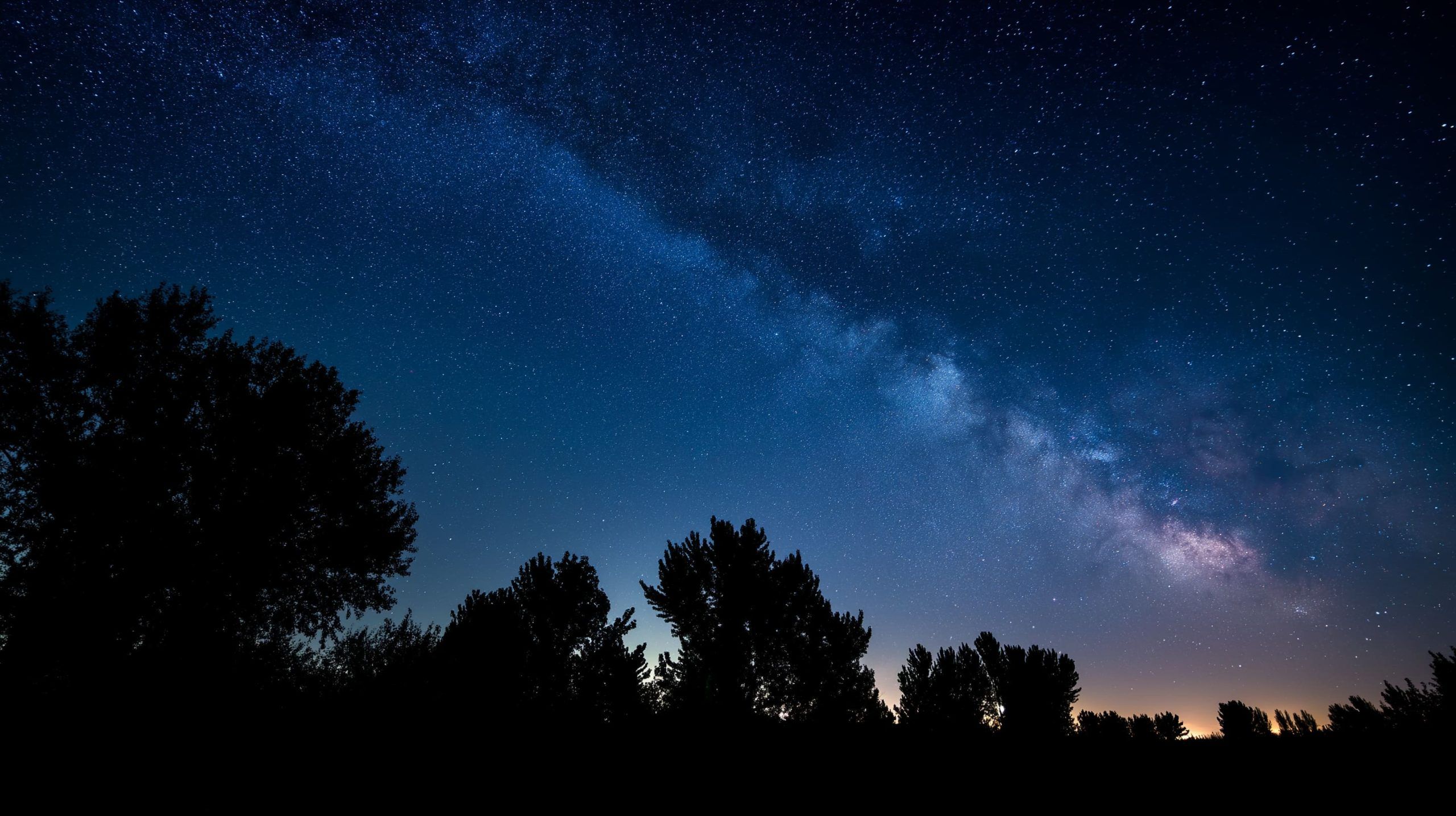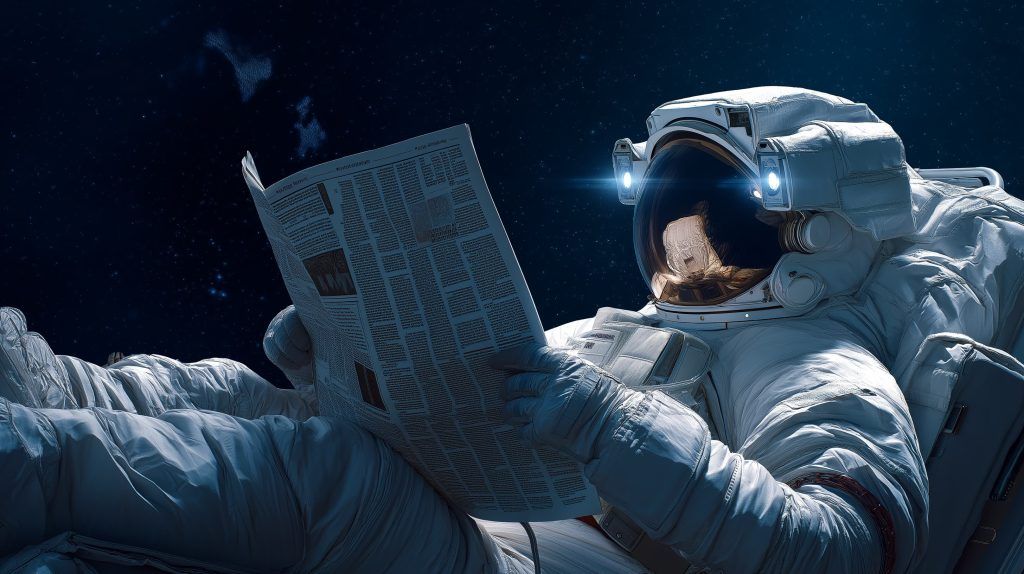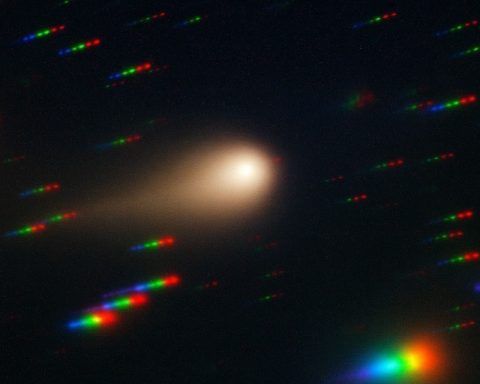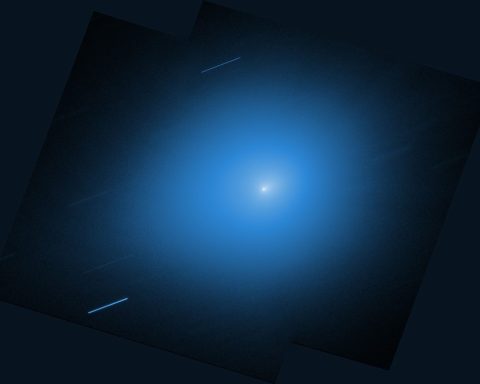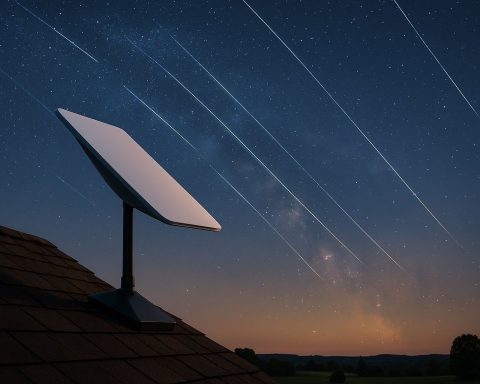- Moonless “Black Moon” Night: August 23, 2025, was a rare “Black Moon” (the third new moon in a four-new-moon season [1] [2]). This means the nights of Aug 27–28 will be exceptionally dark – ideal for spotting faint sky sights without moonlight washout.
- Meteor Shower Watch: The Perseid meteor shower (peak Aug 12–13) has faded; NASA notes only a few bright Perseids remain under the bright Moon of mid-August [3]. Meanwhile the Aurigids (debris of Comet Kiess) begin to appear around Aug 27–28, active Aug 29–Sept 2 with a low peak on Aug 31 [4] [5]. Expect only a handful of shooting stars per hour at best (AMS and Space.com agree the Aurigids are typically very sparse) [6].
- Planetary Lineup: Five naked-eye planets will be on display. In the west after sunset, a thin crescent Moon (≈4–5 days old) will sit just left of faint Mars [7]. Saturn (in Pisces) will rise in the east around 9:00 pm local time and shine all night (it reaches opposition in late August) [8] [9]. In the pre-dawn east, Jupiter will appear by 2–3 am (magnitude –2.5) and Venus by ~4:00 am (very bright at –4.5) [10]. Mercury hovers low just before sunrise (~5–8° above horizon) and may be visible with binoculars [11].
- Northern Lights Alert: The Sun has been unusually active, and a large coronal hole is sending a high-speed solar wind toward Earth. Forecasters (NOAA/Space Weather Center) predict “unsettled to active” geomagnetic conditions on Aug 27, with a slight chance of a minor G1 storm [12]. In other words, high-latitude skywatchers (far northern Europe, Canada, Alaska, or far southern tip of NZ/Tasmania) could see faint auroras late on Aug 27 or into Aug 28. As NASA solar scientist C. Alex Young notes, the Sun’s new active regions “are setting the stage for more volatile days ahead” [13], so it’s worth keeping an eye on the sky.
- Rocket Launches: SpaceX will launch two Falcon 9/Starlink missions in this window. The first lifts off Aug 27 at 6:53 am EDT from Cape Canaveral, and the second on Aug 28 at 1:27 am EDT from Kennedy LC-39A [14] [15]. These launches will be visible as a bright ascending “star” along the Florida coast. (Note: Blue Origin’s New Shepard NS-35 had been planned Aug 27 with student experiments, but it was scrubbed [16].)
- Satellite Trains & ISS: After the Starlink launches, look for the new satellites in a “train” formation. Space.com columnist Daisy Dobrijevic explains that on clear nights you may see “a string of bright, evenly spaced lights” moving slowly across the sky [17] – a dazzling sign of the recently launched Starlink batch. Also, the International Space Station (ISS) will have routine dawn/dusk flyovers worldwide. As NASA notes, the ISS’s orbit covers “more than 90% of Earth’s population,” so it is often visible [18]. NASA’s Spot the Station service can predict exact pass times for your location.
- No Eclipses: There are no solar or lunar eclipses on Aug 28–29, 2025. (The next eclipse is a partial solar eclipse on Sept 21, 2025, visible only from the South Pacific, New Zealand and Antarctica [19].)
Dark “Black Moon” Nights & Shooting Stars
Late August 2025 brings unusually dark skies thanks to a rare Black Moon. The new Moon on Aug. 23 was the third new Moon in a season of four [20] – a configuration that leaves the next days moonless. By Aug 27–28 the slim crescent Moon is just a few days old and sets soon after dusk, so Moonlight won’t drown out fainter night-sky sights [21].
With the Moon out of the way, observers have perfect conditions for meteors – if the meteors cooperate. The Perseid meteor shower (debris from Comet Swift–Tuttle) peaked on Aug 12–13, 2025, but was badly suppressed by a bright Moon [22]. NASA reports that even at peak, “a few bright meteors may still be seen… but viewing conditions are not ideal this year” [23]. By late August only occasional Perseids linger (perhaps 1–5 meteors per hour under very dark skies), and NASA meteor expert Bill Cooke notes that with the Moon’s glare “you’re lucky to see 10 to 20 [meteors] per hour or fewer” [24] during the Perseid peak. So on Aug 28–29, Perseid rates will be very low – roughly the background sporadic rate of ~15–20 meteors per hour under dark skies [25].
Meanwhile, a minor shower is starting up: the Aurigids. Debris from Comet Kiess produces this shower each year around the end of August. The first Aurigid meteors are expected in the pre-dawn hours of Aug 27–28 [26] [27], with the main activity running Aug 29–Sept 2 and a modest peak on Aug 31 [28]. The Aurigids are usually very sparse – often only a few meteors per hour at best even at peak. As one space-watcher explains, “you might not notice any obvious uptick” on Aug 27–28 [29]. In short, do not expect a meteor storm – likely just the odd shooting star at a time. However, with the Moon gone, even faint meteors (Perseids stragglers, Aurigids or random sporadics) are easier to catch. Experts suggest an observing session of an hour or more under truly dark skies for any luck: a single bright flash or fireball can be memorable against the backdrop of the Milky Way.
Five Planets in the Sky
August’s planetary display is rich. In the western sky just after sunset on Aug 27–29, look for the young crescent Moon hovering low above the horizon. Near it will be Mars – a dim, ruddy “star” of about magnitude +1.7. Mars is now quite distant and faint, and sets about 1–2 hours after the Sun. TS2 Spaceweather notes, “Mars appears very low in the west after sunset… Look for a faint reddish ‘star’ to the right of the slim crescent Moon at dusk” [30]. In mid-northern latitudes Mars will be harder to spot in twilight, but in more southerly skies (e.g. Gulf Coast, Southern Europe, or the Southern Hemisphere) Mars stands a bit higher – use the Moon as your guide and binoculars if needed.
Meanwhile, Saturn is now well-placed: it is near opposition (closest to Earth and brightest) in late August, shining like a steady golden star. Saturn will rise in the east around 8:30–9:00 pm local time (earlier by the month’s end) [31] and climb through the night. By late evening on Aug 27 it will be visible low in the eastern sky, reaching about 17° altitude by 10:30 pm (elevation depends on latitude) [32]. Saturn glows at about magnitude 0.4–0.5 and, lying in Pisces (a star-poor area), it stands out clearly. If you have binoculars or a telescope, Saturn’s rings will appear nearly edge-on (a rare vantage this year [33]). Saturn remains in view until dawn (it won’t set until well after sunrise).
Turning to the pre-dawn hours: Jupiter and Venus will dominate the eastern sky before sunrise. Jupiter rises first – on Aug 28 it will be up by about 2–3 am local time, blazing at magnitude –2.5. TS2 Spaceweather describes Jupiter as “extremely bright, brighter than any star… a great target” [34]. By 4 am Jupiter will be high in the east/southeast (in Gemini, near Castor & Pollux). Soon after (about an hour later) the brilliant Venus will clear the horizon. Venus rises roughly 3–4 am and by dawn is about 10° above the eastern horizon, shining at –4.5 [35]. It will outshine all other stars and planets – the first “star” you see in the morning glow. In fact, if you’re up early you might glimpse Jupiter and Venus in the sky together, a striking duo often called a “double lighthouse”. Mercury lurks even closer to the sunrise: it rises ~90 minutes before the Sun on these dates, but only gains ~5–8° altitude by sunrise [36]. Mercury is magnitude +0.5, and viewing it will be challenging (especially from higher latitudes) against the brightening sky. Binoculars and a clear eastern horizon are your best bet if you wish to catch Mercury a few minutes before dawn.
In summary, Aug 28–29 is a planet-rich night. You’ll see five planets: Mars (evening), Jupiter, Venus, Mercury (morning), plus Saturn lasting through the night. Uranus and Neptune require a telescope (they’re faint at magnitude ~6–8), but for wide-field wonderers note: on Aug 28 Saturn and Neptune are just a couple degrees apart in Pisces (Neptune was very close to Saturn earlier in August) – a neat binocular sight [37].
Aurora Watch – Minor Storm Possible
The Sun has been unusually active lately, and space weather experts are issuing a subtle aurora alert for Aug 27–28. In the past few days several new sunspot groups have emerged and produced multiple M-class flares. NASA solar scientist C. Alex Young notes that “action is picking up on the eastern solar disk,” with five M-class flares recorded on August 25–26 alone [38]. The strongest was an M4.5 on Aug 26, which can cause brief radio blackouts. (Fortunately that flare’s coronal mass ejection missed Earth [39].)
More relevantly for aurora watchers, a large coronal hole on the Sun has been streaming high-speed solar wind toward Earth [40]. NOAA’s Space Weather Prediction Center forecasts “unsettled to active” geomagnetic conditions on Aug 27 due to this stream, with a slight chance of reaching a G1-level minor geomagnetic storm [41]. In practical terms, we may see a Kp index up to ~5 – enough to push the northern lights a bit equatorward of their usual zone. If this happens, observers in far-northern locations (northern Canada, Alaska, Iceland, northern Scandinavia) or far-southern (Tasmania, New Zealand’s South Island) could spot faint, greenish or reddish aurora glows low on the horizon late on Aug 27.
By Aug 28 the geomagnetic disturbance should ease (forecasts call for a return to quiet or only “isolated unsettled” levels [42]). In other words, Aug 27 night is the best (and still low-probability) chance. Note: even an official G1 storm is quite mild (harmless to people on the ground), but it’s fun for aurora chasers. As one space weather expert points out, even a minor G1 storm could make northern lights visible as far south as northern-tier U.S. states or mid-latitude Europe (though low on the horizon) [43].
If you live at high latitude, you might monitor official forecasts (NOAA, SWPC) or social media updates from aurora experts (e.g. Dr. Tamitha Skov, who recently noted a solar wind stream “on its way” that could spark auroras [44]). With the Moon very low on Aug 27, sky conditions are ideal for catching any auroral glow. Keep an eye on the northern (or southern, for SH) sky after midnight – even a faint diffuse green glow would be a thrill under these dark summer nights.
Rocket Launches and Satellite Spectacles
This late-August weekend will be busy for human-made sky shows too. SpaceX has scheduled two Starlink launches in this 48-hour span. The first is on Aug 27 at 6:53 am EDT (1053 GMT) from Cape Canaveral SLC-40 [45]. The second is in the wee hours of Aug 28 at 1:27 am EDT (0527 GMT) from Kennedy LC-39A [46]. Both use Falcon 9 rockets carrying dozens of Starlink internet satellites. If you’re in Florida or nearby states and it’s clear, the early-morning Aug 27 launch could be spectacular: as the rocket ascends into the dawn sky, the high-altitude exhaust may catch sunlight and create a glowing “jellyfish” cloud visible for hundreds of miles [47]. (SpaceX often livestreams its launches, so you can also watch online.)
The Aug 28 launch is just after midnight local time, lighting up the sky like a bright moving star for a minute. Observers anywhere in Florida – and perhaps up the East Coast – should look northeast for a brief bright streak as the Falcon 9 climbs. Because it’s very dark at launch, the exhaust plume will not be as dramatically illuminated as at sunrise, but keen skywatchers near the launch corridor might still glimpse an expanding faint cloud lit by the rocket’s flames [48]. Once the Falcon 9 reaches space, it will deploy a new “train” of Starlink satellites.
Satellite Trains: Right after deployment, the newly launched Starlinks orbit together in a line. Over the next few nights, you may see that line of satellites moving in a row across the sky. Space.com’s Daisy Dobrijevic describes these Starlink trains vividly: “On clear nights, you may spot these satellites as they streak across the sky, resembling a string of bright, evenly spaced lights” [49]. (People often mistake them for UFOs!) The evening of Aug 27 and the dawn of Aug 28 are prime times to look for the first train from the morning launch; similarly, on Aug 28 night or early Aug 29 dawn look for the train from the midnight launch. Check prediction websites/apps like Heavens-Above or FindStarlink for exact times and directions for your location. Note that SpaceX is gradually darkening the satellites, so these strings are not as bright as in earlier years [50], but they can still be impressive.
Other Launches: Blue Origin had planned its 35th New Shepard flight (NS-35) on Aug 27 at 8:30 am EDT from West Texas [51], carrying about two dozen student science experiments. However, the launch was scrubbed due to an avionics issue [52]. They attempted (and paused) earlier on Aug 23 and 26, so expect a reschedule in the near future. (When it does fly, the New Shepard’s contrail might be visible in west Texas.)
Spaceflight fans will be watching news of SpaceX Starship Flight 10 (test flight) as well: it had been planned for Aug 26 from Boca Chica, Texas. As of this writing it appears delayed (FAA/technical work), so it is unlikely to happen on Aug 28–29. If it does launch late August, it would be a huge spectacle – but we won’t count on it yet.
Satellites & the ISS
Besides Starlink, many satellites patrol the sky. The International Space Station (ISS) makes regular passes every 90 minutes. It won’t be overhead continuously, but as a bonus it’s often the brightest object in the sky (aside from the Moon). NASA notes the ISS “passes over more than 90% of Earth’s population” [53], so nearly everyone has a chance to see it. Around late August the schedule is shifting: many Northern Hemisphere locations will see the ISS in the early morning hours (pre-dawn) rather than in the evening. For example, in Warsaw (Mazovia, Poland) there should be bright early-morning passes around 4:30–5:00 am on Aug 27–28 (low in the southwest moving east). In any city worldwide, you can use NASA’s “Spot the Station” (spotthestation.nasa.gov) or phone apps to find exact sighting times. When it passes, the ISS looks like a very bright (–3 to –4 magnitude) steady white point, crossing the sky in a few minutes. It’s a great opportunity to wave at the crew (currently Expedition 73) or simply enjoy a man-made satellite gliding overhead.
Beyond the ISS and Starlinks, you may occasionally notice other satellites or even the Chinese Tiangong space station moving against the stars. Apps like Heavens-Above will show you if any bright satellites or Iridium flares occur. Because it’s almost a moonless night, faint satellites and even the faint zodiacal light (the glow from sunlight scattering on interplanetary dust) might be visible just after dusk toward the western horizon. In fact, with the Milky Way arching overhead through Pegasus, Aquila, and Cygnus, late August offers some of the Milky Way’s most striking summer views – an added bonus for any skywatching outing.
Viewing Tips from Experts
- Dark Skies: Take advantage of the dark new-Moon sky. Get away from city lights if possible, let your eyes adjust for at least 20 minutes, and bring a reclining chair or blanket. Even a few Perseids or Aurigids will be more noticeable under truly dark conditions. Keep warm and be patient – experts suggest watching for at least an hour.
- Meteor Timing: Meteors are always most frequent after midnight when your location on Earth faces into the oncoming meteor streams. So aim for the wee hours of Aug 28 and 29 (after 1–2 am local). During twilight (dawn/dusk) bright planets and satellites are easily seen, while meteor viewing is best in fully dark skies.
- Planets: For Mars, Saturn, Jupiter, Venus – no telescope needed, just eyes or binoculars. A wide-field sky map can help locate Saturn in Pisces and Jupiter-Venus in Gemini. Use the slender Moon as a pointer to Mars at dusk [54].
- Auroras: If you’re far north, watch the northern sky late on Aug 27. The Moon will be setting, and the horizon may glow even green or pink if the Earth’s magnetic field is disturbed. Even if you see nothing, it’s worthwhile since the conditions are unusually promising. Follow NOAA/SWPC or SpaceWeather.com alerts for real-time updates.
- Watching the Launches: If you’re near Florida, consider heading to a public viewing area along the Space Coast (the Space View Park in Titusville, Flori, or similar spots). If not, glance east around 6:53 am EDT on Aug 27 or 1:27 am EDT on Aug 28 for a bright rocket launch streak. Cameras on tripods can capture the long exposure “jellyfish” plume at dawn.
- Seeing Starlink Trains: After sunset on Aug 27–29, check for a line of moving lights. Websites (Heavens-Above, N2YO) can list passes of the new Starlink batch. The satellites will fade out after a few days as they spread out. Seeing one of these space-trains is easy and fascinating even without any gear.
Sources and Expert Commentary
This report is based on up-to-date space weather forecasts and skywatching guides. We drew on NASA and astronomy media: for example, NASA’s “What’s Up” august sky guide notes the Perseids peak was moonlit [55], and NASA experts like Bill Cooke and C. Alex Young provide context on meteors and solar activity [56] [57]. Space.com stargazers (Jesse Emspak, Daisy Dobrijevic, etc.) provide detailed observing info [58] [59]. The American Meteor Society and NOAA Space Weather Center also contributed predictions [60] [61]. All event dates and times come from official launch schedules and astronomical forecasts. For live updates on satellite passes or solar storms, see NASA’s Spot the Station and SWPC’s Aurora Forecast. And as always, the sky itself is the ultimate source – keep looking up!
References
1. www.space.com, 2. ts2.tech, 3. science.nasa.gov, 4. ts2.tech, 5. www.amsmeteors.org, 6. ts2.tech, 7. ts2.tech, 8. ts2.tech, 9. www.space.com, 10. ts2.tech, 11. ts2.tech, 12. ts2.tech, 13. ts2.tech, 14. ts2.tech, 15. ts2.tech, 16. ts2.tech, 17. ts2.tech, 18. ts2.tech, 19. www.space.com, 20. www.space.com, 21. ts2.tech, 22. science.nasa.gov, 23. science.nasa.gov, 24. ts2.tech, 25. ts2.tech, 26. ts2.tech, 27. www.amsmeteors.org, 28. www.amsmeteors.org, 29. ts2.tech, 30. ts2.tech, 31. ts2.tech, 32. www.space.com, 33. ts2.tech, 34. ts2.tech, 35. ts2.tech, 36. ts2.tech, 37. ts2.tech, 38. ts2.tech, 39. earthsky.org, 40. ts2.tech, 41. ts2.tech, 42. earthsky.org, 43. ts2.tech, 44. ts2.tech, 45. ts2.tech, 46. ts2.tech, 47. ts2.tech, 48. ts2.tech, 49. ts2.tech, 50. ts2.tech, 51. ts2.tech, 52. ts2.tech, 53. ts2.tech, 54. ts2.tech, 55. science.nasa.gov, 56. ts2.tech, 57. ts2.tech, 58. www.space.com, 59. ts2.tech, 60. www.amsmeteors.org, 61. ts2.tech
